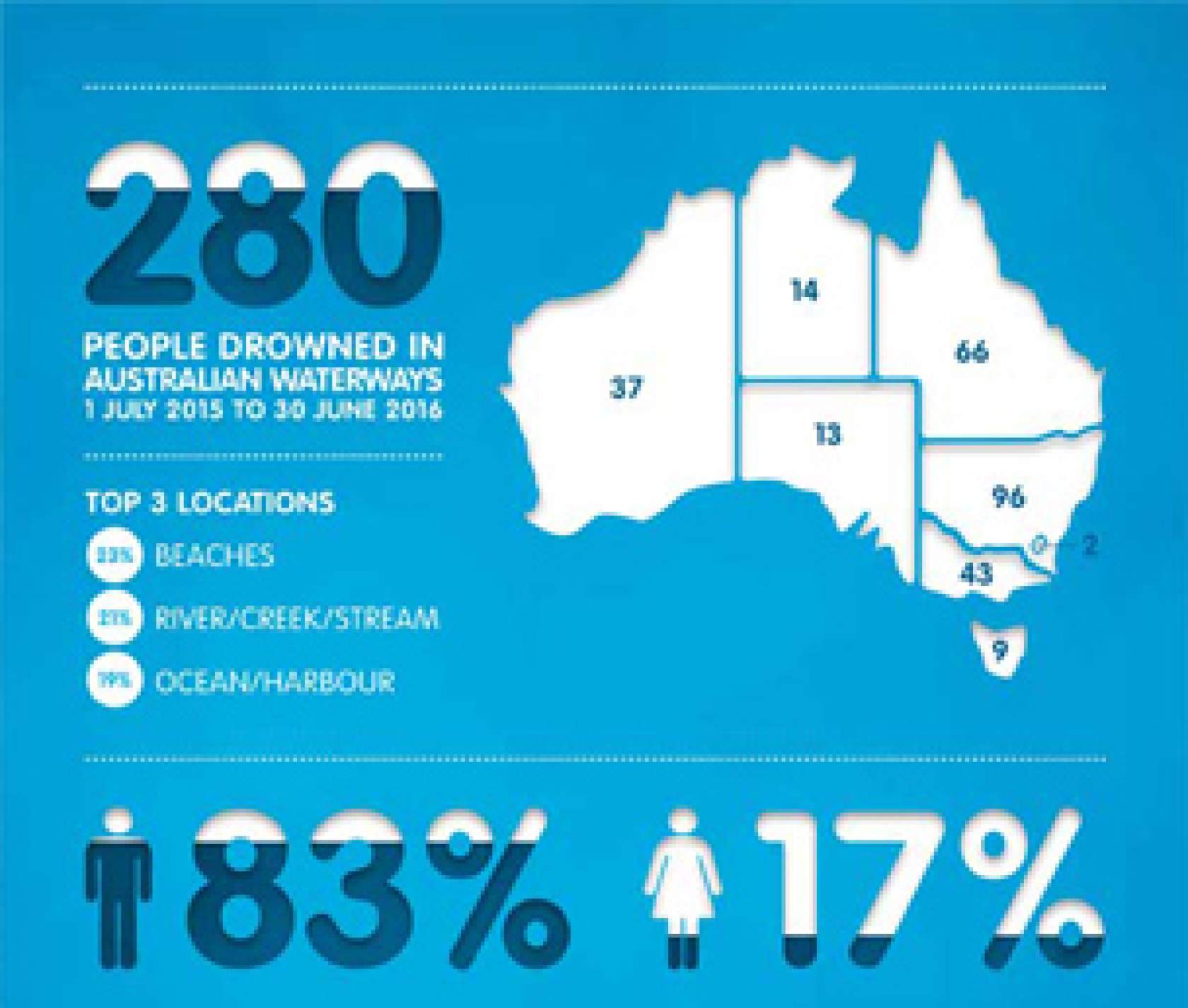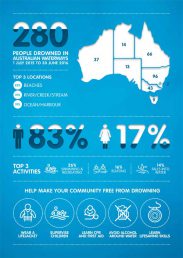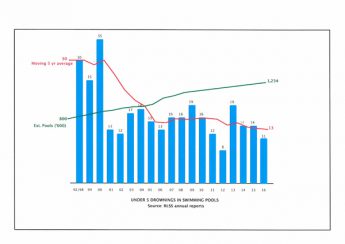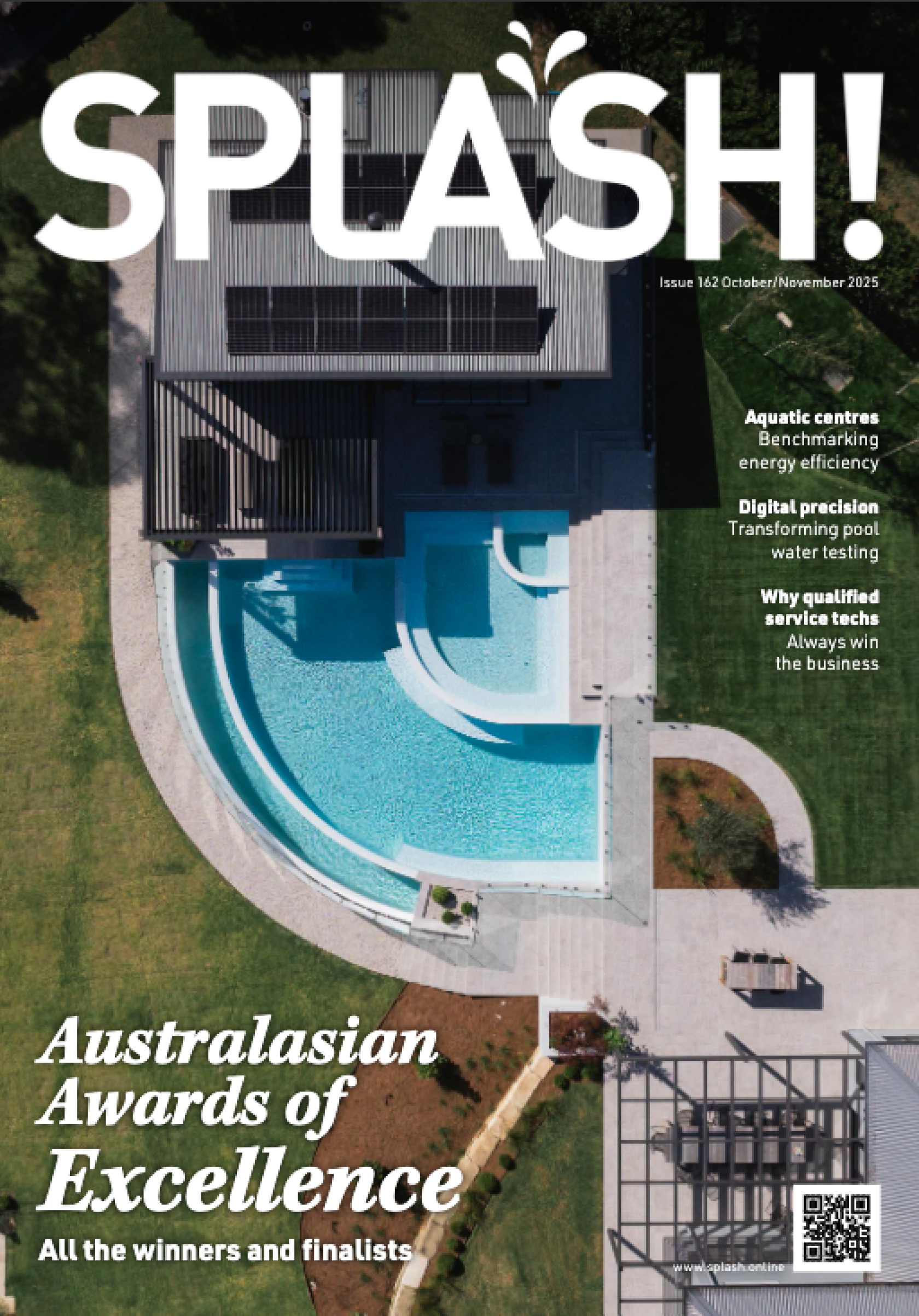Under-five pool drownings decrease by 31 per cent compared to 10-year average

 The National Drowning Report 2016 prepared by Royal Life Saving Australia has shown that while total pool drownings increased by 22 per cent year-on-year, the all-important under-fives category has shown a considerable decrease.
The National Drowning Report 2016 prepared by Royal Life Saving Australia has shown that while total pool drownings increased by 22 per cent year-on-year, the all-important under-fives category has shown a considerable decrease.
Over the period from 1 July 2015 and 30 June 2016 there was a decrease of 31 per cent of pool drownings for under-fives, compared to the 10-year average. The 11 drownings were 36 per cent less than the 14 that occurred over the same period last year.
While each death is a tragedy, the fact that less under-fives are drowning in swimming pools is a positive development.
The drowning rate for under-fives is also of most importance for the industry as swimming pools account for more than half the deaths in that group, and it is the basis for the swimming pool fencing regulations across various jurisdictions. Therefore, a decrease in pool drownings in the under-fives indicates the industry and regulatory safety measures are finding some success.
Cal Stanley, who has sat on a number of Standards committees relating to pool safety, says the improvement is even greater when weighed against the increase in pool numbers.

“I recently completed a chart depicting the drowning of 0-4s in swimming pools over the past 25 years, a moving five-year average and the increase in numbers of pools over the same period. This chart shows a continual 57 per cent decrease in drownings over the period against a 54 per cent increase in the estimated number of swimming pools in the country.”
He points out that other statistics from the 2016 Drowning Report – and other similar studies – indicate very low levels of drownings when the pool barrier is compliant, with the vast majority occurring in pools with defective barriers or (particularly in NSW) those with no barrier at all.
“Many gain access through propped open gates or are let into the pool area by their parents and/or older siblings. This highlights the fact that the industry and the Standard is doing its job very well under the circumstances.”
NSW drowning deaths in children under five
Private swimming pool drowning deaths in children under five in New South Wales were reviewed in the report. Between 1 July 2002 and 30 June 2015, 83 such drowning deaths were recorded. The key findings related to appropriate supervision, pool fencing and emergency care.
• Supervision was completely absent in 59 per cent of cases, with older siblings or other children left to supervise younger children in 6 per cent of cases
• Among cases where it was known how long a child was left unsupervised for, 33 per cent of children were left unattended for 5 to 10 minutes and 30 per cent were left unattended for 3 to 5 minutes
• Among cases with information on fencing available, fencing was present in 27 per cent of cases, absent in 27 per cent of cases and faulty in 35 per cent of cases
• Among cases with available information, children most commonly gained access to the pool through a faulty fence or gate (38 per cent), lack of a fence (31 per cent) or a gate which was propped open (18 per cent).
People not statistics
Justin Scarr, CEO of Royal Life Saving Australia asked in the foreword to consider that the report is filled with the stories of real people impacted in a most tragic way by drowning. It includes people who lost their lives to drowning, the families they left behind, the rescuers who made valiant efforts to save their lives, and the communities that are reminded as they pass the causeway, swimming pool, rock platform, beach or river swimming holes. He says Royal Life shares their anguish.
He also pointed out there are two types of drowning: fatal and non-fatal.
Those who survive a drowning incident, often do so while suffering from an array of lifelong health impacts. In some cases these impacts lead to premature death.
“In the past year we have added non-fatal drowning as a key issue to the Australian Water Safety Strategy, and commenced research to build our awareness and understanding of the impacts of non-fatal drowning. In coming years we hope to identify and report on our actions in response to this challenge.”
RLS also continues to commit to the notion that all Australian children have the right to a comprehensive swimming and water safety education.
“The skills of swimming, survival swimming, and basic rescue are all life savers, yet we know that there are many barriers; cost, distance, awareness, and acceptance for communities most at risk of drowning. We continue to benchmark skills, strengthen partnerships, and build Swim and Survive equity programs to provide more children with these lifelong skills.”
ASSA
The Australian Swim Schools Association (ASSA) CEO Ross Gage urged all Australians to learn swimming and water safety skills in the wake of the report. Of particular concern to ASSA is the 21 fatalities in the under-five age group.
“For every death, many are left with some form of permanent brain damage from immersions,” he says. “The report highlights that once again swimming pools are by far and away the main location for such terrible accidents.
He recommends parents seek out an ASSA member swim school, but also says that while swimming and water safety lessons are vital layers of protection, they are not a substitute for proper supervision and barriers.
ASSA promotes four Layers of Protection:
1. Constant adult supervision: Don’t let the kids out of your sight.
2. Proper barriers in place: Keep fences and gates locked up tight.
3. Swimming and water safety skills and education: Learn to Swim, and how to get to safety.
4. Emergency Action Plan: Always have a plan in case of emergency.
ASSA encourages parents to enrol children in swimming lessons in their early months, allowing time for the infant’s immune system to strengthen and bonds to develop with their primary carers.
There will be more information on this topic in the October issue of SPLASH! (edition 108).




